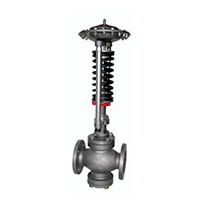Pressure controllers
Description of Section "Pressure controllers"
Pressure controllers are devices designed to automatically maintain a specified level of pressure of the working medium (gas or liquid) in various industrial systems. They are widely used in gas supply, heating systems, pneumatic installations, and other engineering networks.
Main Functions of Pressure Controllers
- Pressure Stabilization: Controllers ensure constant output pressure regardless of fluctuations in input pressure or changes in the flow rate of the working medium.
- System Safety: Controllers prevent exceeding the permissible pressure, protecting equipment and pipelines from damage.
- Resource Savings: Devices minimize energy and working medium losses through precise parameter control.
Operating Principle
The operation of pressure controllers is based on the balance of forces between:
- Pressure of the working medium;
- Force of the spring or diaphragm inside the device.
When pressure after controller drops below the set value, spring expands, opening the valve to increase the flow of the medium. If the pressure rises above the norm, the spring compresses, closing the valve and reducing the flow. This achieves a balance between the input and output pressure.
Areas of Application
- Gas Supply:
- Used in gas distribution points, boiler installations.
- Pneumatics:
- In production lines for controlling pneumatic tools.
- Heating Systems:
- For regulating the supply of heat carrier to radiators.
- Chemical Industry:
- Control of ammonia or other chemical substances under pressure.
